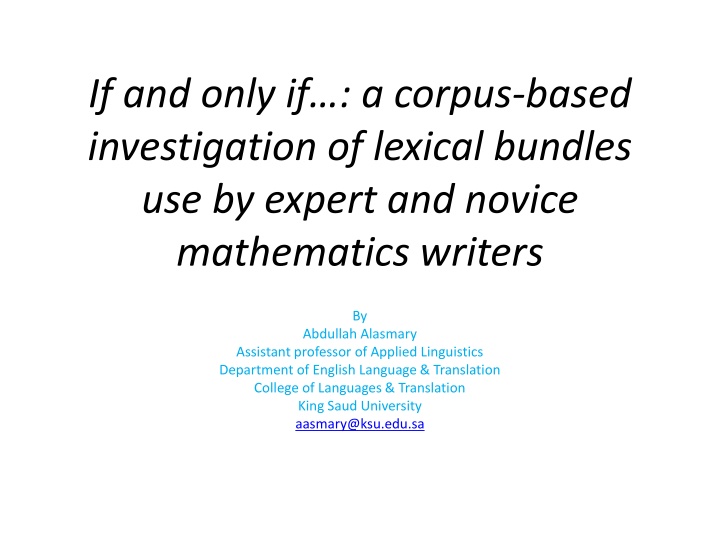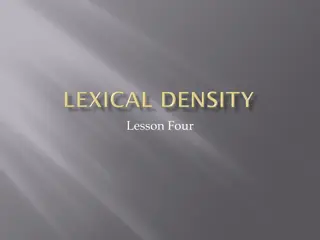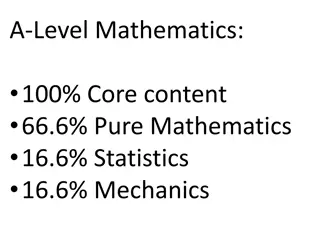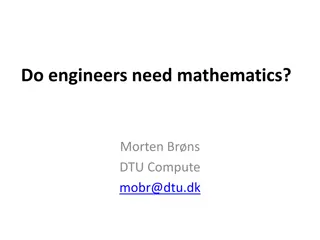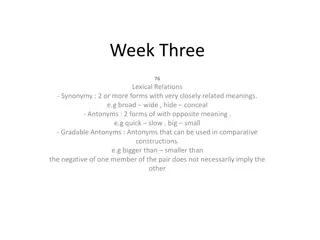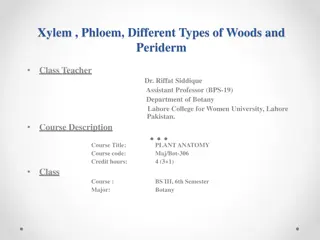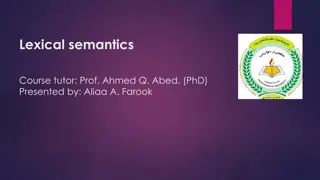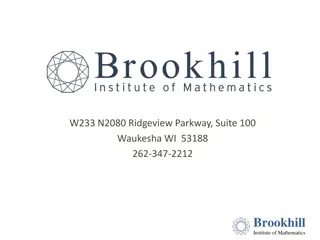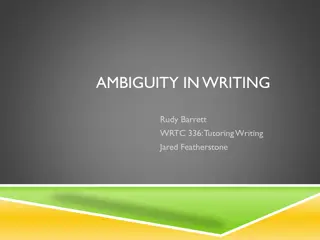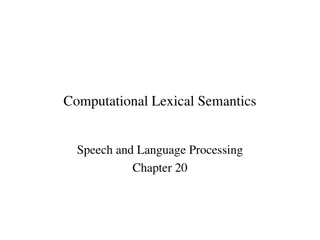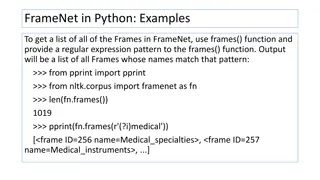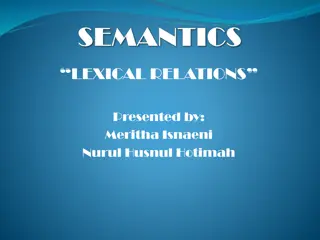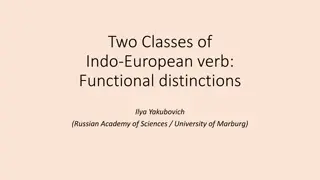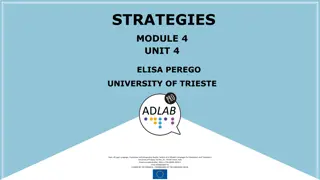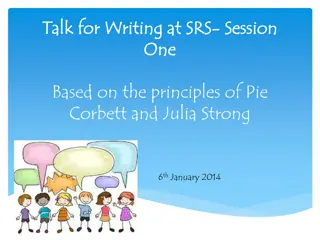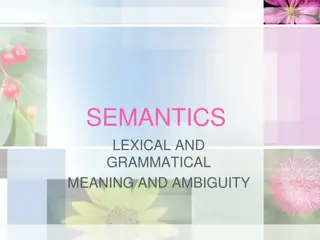Lexical Bundles in Mathematics Writing
Corpus-based investigation of lexical bundles used by expert and novice mathematics writers across various disciplines. Research explores the multi-semiotic nature of math discourse, comparing bundles in spoken versus written registers, academic versus non-academic contexts, and discipline-bound areas like law and pharmacy.
Download Presentation

Please find below an Image/Link to download the presentation.
The content on the website is provided AS IS for your information and personal use only. It may not be sold, licensed, or shared on other websites without obtaining consent from the author.If you encounter any issues during the download, it is possible that the publisher has removed the file from their server.
You are allowed to download the files provided on this website for personal or commercial use, subject to the condition that they are used lawfully. All files are the property of their respective owners.
The content on the website is provided AS IS for your information and personal use only. It may not be sold, licensed, or shared on other websites without obtaining consent from the author.
E N D
Presentation Transcript
If and only if: a corpus-based investigation of lexical bundles use by expert and novice mathematics writers By Abdullah Alasmary Assistant professor of Applied Linguistics Department of English Language & Translation College of Languages & Translation King Saud University aasmary@ksu.edu.sa
What is a lexical bundle? Lexical bundles are sequences of word forms that commonly go together in natural discourse (Biber et al., 1999: ch.13)
Research on LBs Spoken vs. written registers (Biber, Johansson, Leech, Conrad, & Finegan, 1999; Simpson- Vlach & Ellis, 2010) academic versus non-academic registers (Biber & Barbieri, 2007) classroom teaching and instructional textbooks (Biber et al., 2004)
Broad range of disciplines electrical engineering, business studies, applied linguistics, and biology (Hyland, 2008a, 2008b) anthropology, economics, politics and sociology (Durrant & Mathews-Ayd nl , 2011) business and engineering, arts and humanities, life, physical and social sciences (Chen & Baker, 2010) information science, business management, urology, hematology, oncology, food technology and earth sciences (P rez-Llantada, 2014)
Discipline bound law (Breeze, 2013) pharmacy (Grabowski, 2015) telecommunications (Pan et al., 2016) linguistics ( del & Erman, 2012; Qin, 2014)
mathematics & lexical bundle research Lexical bundles used by math teachers and students. Herbel-Eisenmann, Wagner and Cortes, (2010) Lexical bundles by journal contributors (Cunningham, 2017)
mathematics overlooked Multi-semiotic nature of math discourse (Huang & Normandia, 2007; O Halloran, 2005; Schleppegrell, 2007) Least language-dependent discipline grammatical patterns characteristic of math discourse such as assume, product, set, elements
Research questions What are the most frequent, broadly spread lexical bundles used by accomplished and novice writers in the domain of mathematics? Which bundles have the tendency to transcend register boundaries? Which bundles are register-specific? To what extent do these bundles differ structurally and functionally across the three groups of mathematics writers?
Methodology Corpus part 1: dissertations Part 2: textbooks part 3: journal articles Corpus #texts Tokens Types (distinct words) Dissertations (DISS-ONs) 20 672,878 17,381 Journal Articles (JOL-ARs) 34 670,186 18,139 Textbooks sections (TXT-BKs) 43 671,279 23,584 Total 97 2,014,343 59,104
Criteria for bundle identification Frequency (17 times per corpus-25 pmw) (50 in Breeze, 2013: 10, Biber et al., 1999) Distribution ( 15 %) Number of words ( 4-word)
Data refinement symbolic notations and figures Complete overlap & complete subsumption (Chen & Baker, 2010) 1. it is not difficult & is not difficult to 2. it suffices to show & suffices to show that tokens Vs. types
Analytical procedures Texts cleared and converted into .txt. Files Wordsmith tools 6.0 (Scott, 2016) Sequences refined using frequency & dispersion measures. Structural analysis (Biber et al. 2004) Functional analysis (Hyland, 2008b)
Results Corpus # Tokens # Types DISS-ONs 63 3358 JOR-ARs 115 6287 TXT-BKs 113 6423 Total 291 16068 # of bundles shared 29, representing 46 % of DISS-Ons, 25 % of JOR-ARs & TXT-BKs DISS-ONs share two bundles with JOR-ARs and four bundles with TXT-BKs JOR-ARs & TXT-BKs share 31 bundles
Structural classification Phrasal categories Verbal categories Others
Category DISS-ONs type (%) 29 JOL-ARs type (%) 15 TXT-BKs type (%) 15 examples Structural Pattern 1.NPs + of- phrase frag. token (%) 21 token (%) 17 token (%) 15 NP- based the set of all, the proof of theorem, the proof of the upper bound for, the right hand side, the fact that the from the definition of, in the case of, in terms of the, in this section we, with respect to the, on the other hand is the set of, be the set of, is the same as let (a)* be a, we have the following, this completes the proof it is clear that, it is enough to, it is sufficient to 6 3 3 2 3 2 2.Other NPs 1.PPs + embedded of- phrase PP- Based 8 10 16 16 10 8 11 16 10 13 6 9 2.Other PPs 1.Copula be+ NP/AdjectiveP Verb- Based 8 6 11 7 17 11 2.VP with active V 6 4 12 11 11 9 3.Anticipatory it +VP/AdjP + Complement Clause 4.Existential there + NP 6 7 8 8 4 6 6 6 7 6 9 8 then there exists a, that there exists a, then there is a is said to be, is given by the, can be written as we find that the ,to show that the, we may assume that if and only if, independent of the choice, such that for all 5.Passive verb +PP fragment 9 10 3 3 6 5 6.Verb phrase +that-clause fragment 8 5 10 9 13 10 1.Conditional & other fragments Others 3 12 5 8 6 17 100 100 100 100 100 100 Total
Are these structural differences significant? Chi-square test demonstrates that there is a significant difference in the structural distribution of lexical bundle tokens between DISS-ONs, JOL-ARs and TXT-BKs ( 2 = 530 df = 6, p <.0001 Cramer s V=0.1284). Another Chi-square shows that there is no significant difference in terms of the structural distribution of bundles (types) across the three groups of mathematics writers ( 2 = 12.33, df=6, p 0.05, Cramer s V= 0.1456).
Functional differences Hyland s (2008b) classification of bundles: Research-oriented Text-oriented Participant-oriented
distribution of functions Functional types DISS-Ns types (%) 60 26 14 100 JOR-ARTs types (%) 43 33 24 100 TXT-BKs types (%) 61 21 18 100 tokens (%) 62 25 13 100 tokens (%) 44 34 22 100 tokens (%) 62 20 18 100 Research-oriented Text-oriented Participant-oriented Total
How significant are the functional differences? A Chi-square test shows that there are significant differences in the distribution of bundle (types) ( 2 = 562 df = 4, p <.0001 Cramer s V=0.1322) & bundle tokens ( 2 = 562 df = 4, p <.0001 Cramer s V=0.1322) between the three mathematics writing groups
discussion and final remarks The paucity of recurrent academic clusters in the writings of student mathematicians confirms a pattern in some previous research, suggesting that nonnative speakers and novice writers tap into a restricted set of highly frequent and less varied multiword strings ( del & Erman, 2012; Chen & Baker, 2010; Cortes, 2004)
Discussion & final remarks the proportion of bundles that student mathematician shares with expert writers is congruent with a similar proportion reported by Hyland (2008a). Pan et al. (2016) pointed out that a total of 24 bundles occurred in the two corpora they investigated, representing 43 % of the non-native corpus and 34 % of the native corpus. del and Erman (2012) found that 22 % of bundles are shared by native and nonnative linguistics groups, whereas Chen and Baker (2010) reported a much less proportion at 16%. Cortes (2004) points out that lexical bundles used by accomplished authors in history and biology are scarcely, if ever, employed by student writers in these two distinct disciplines
Discussion & final remarks Structural comparisons reveal that each group prioritizes certain forms in a way that is distinct from the others. Texts produced by the students are marked by the extensive use of bundles comprising nominal and prepositional phrases, a pattern typical of mature disciplinary writers (Biber et al., 2004; Liu, 2012; Pan et al., 2016). Authors of mathematical textbooks exhibit a clear preference for bundles incorporating verb-based constructions, some of which are near-complete units (e.g. we must show that, we obtain the following), but some others are merely clausal fragments (e.g., is the set of, does not depend on).
Pedagogical implications Form- focused and function-focused intervention Attention-drawing techniques such as highlighting, underlining etc. Corpus-extracted examples as models to emulate
Direction for future research Create a fully developed functional framework for lexical bundles in mathematics Explore lexical bundles use in classroom contexts (e.g., student-teacher interaction)
